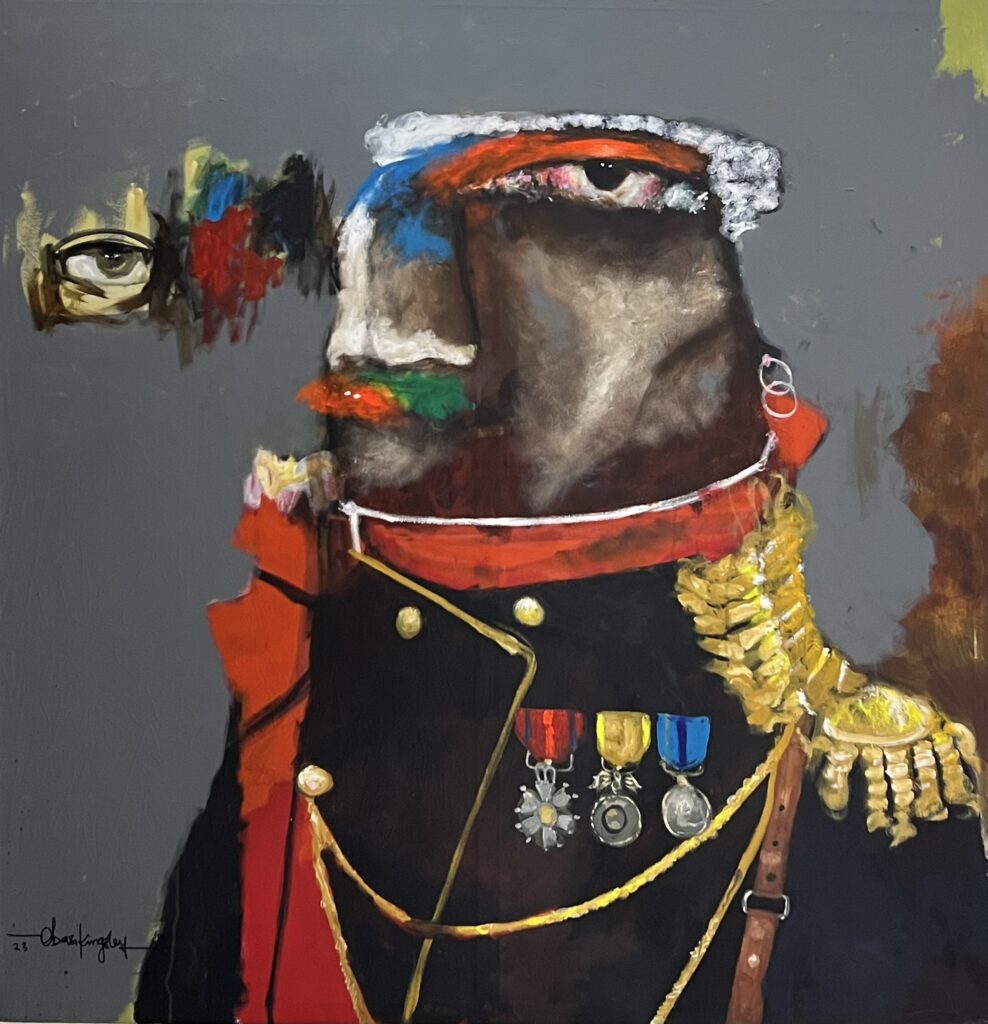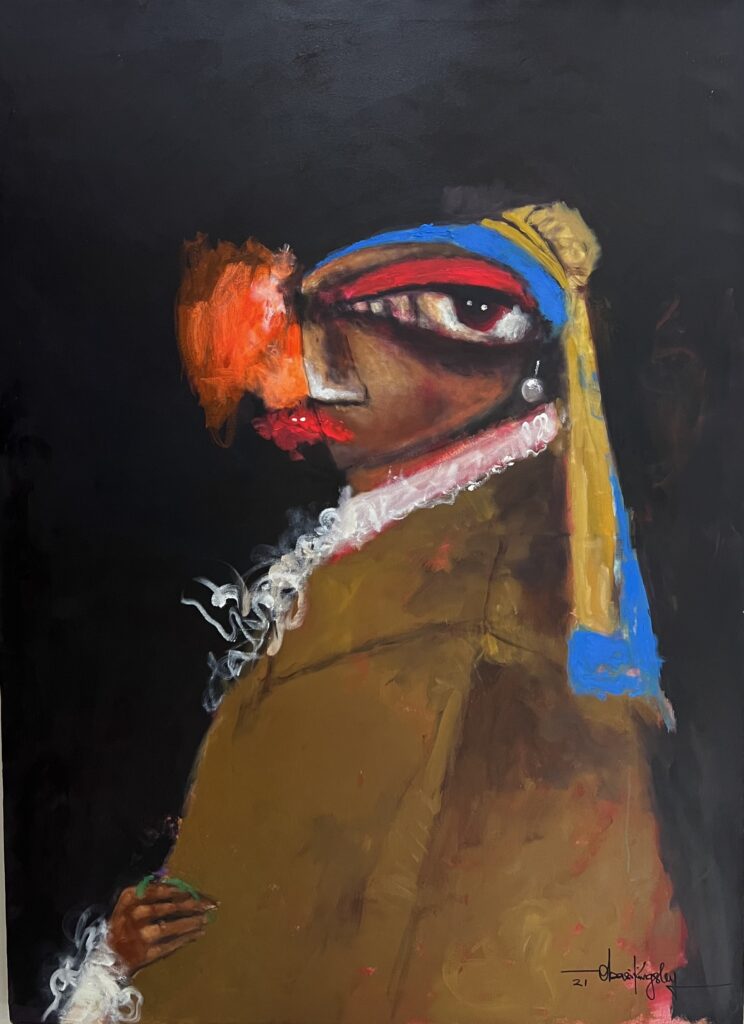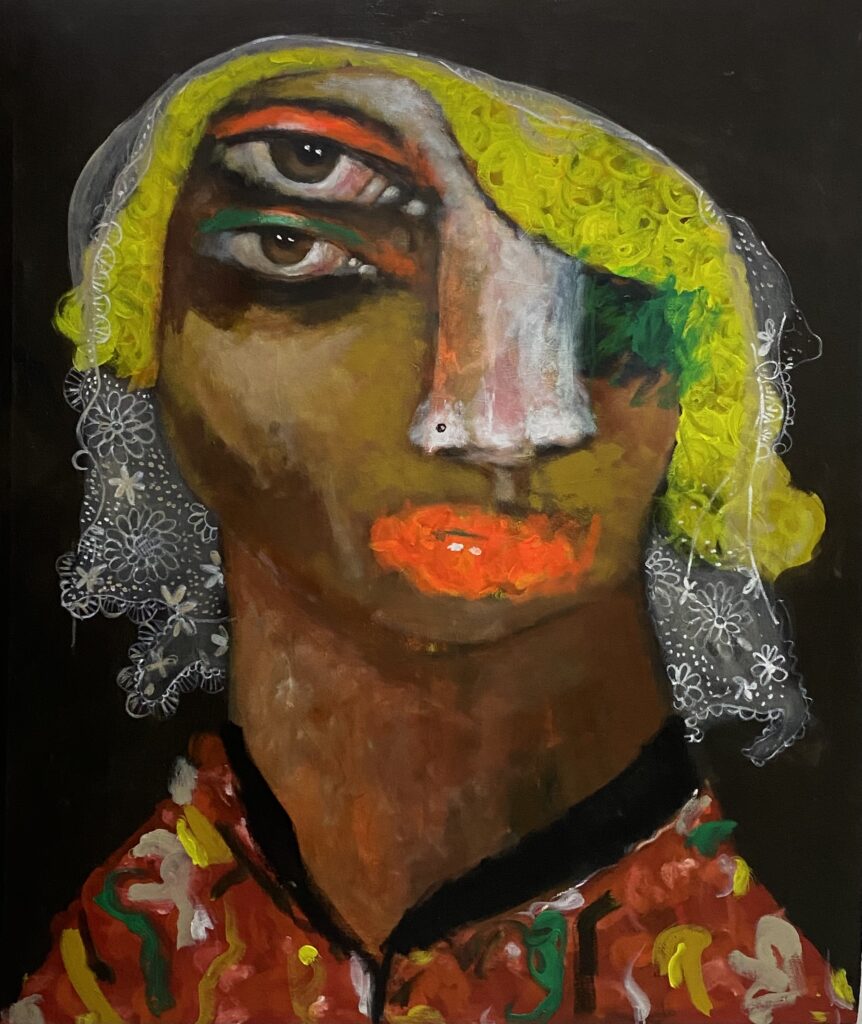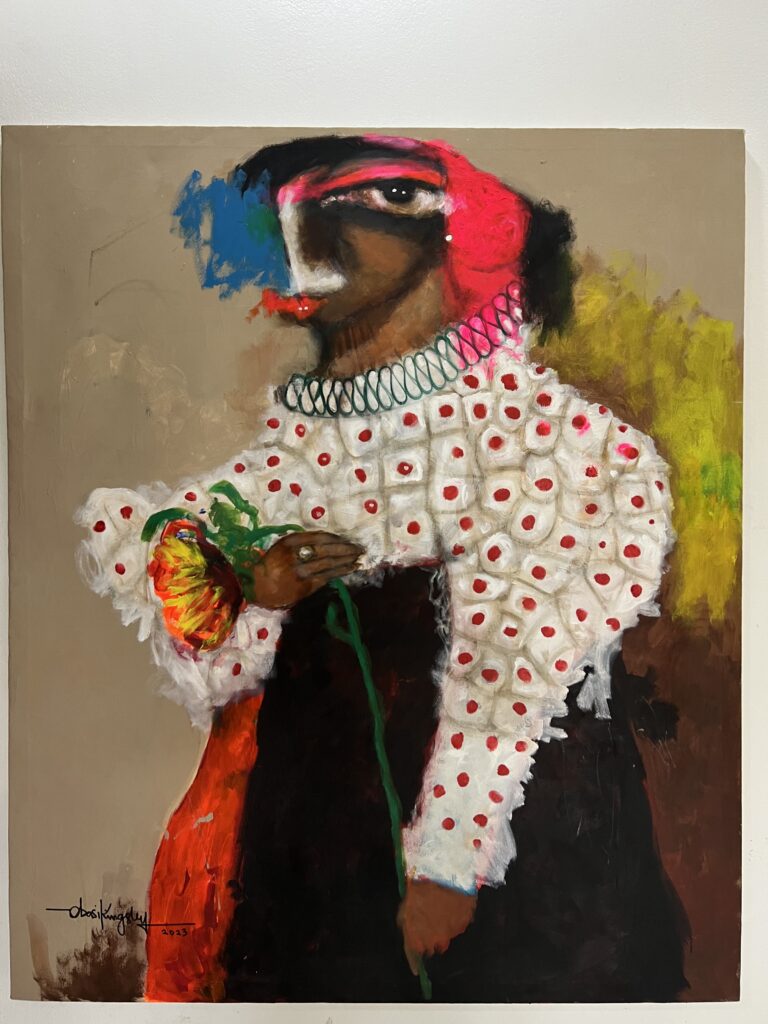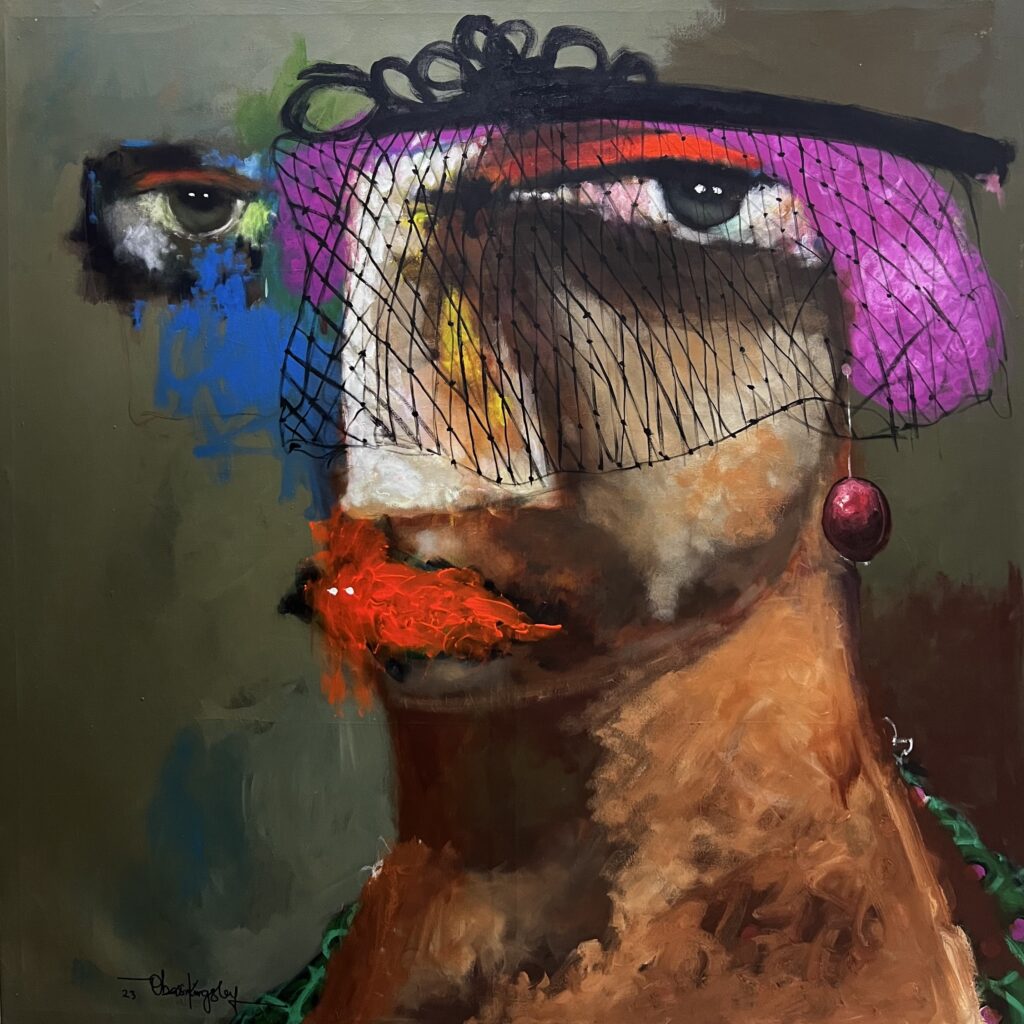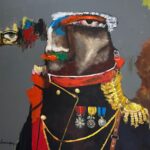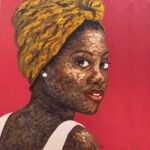Born in Abia State, Nigeria in 1981, Kingsley Obasi has gained recognition for his distinctive figurative style. He trained at the School of Art and Design at Yaba College of Technology before commencing a career as an art teacher in Lagos. Now working as an artist fulltime, Obasi has garnered significant attention from the international art world. His work was presented in a solo show at Signature African Art, London in 2019 and was also included in the group exhibition, One’s Guise, staged by the gallery in 2021 and in 2022, he had a solo show at chilliart projects, London.
Kingsley’s works have been a success in different auctions houses such as Sotheby’s, Christie’s, Philip’s , Bonhams,
Depicting an array of fictional, historical, and popular figures, Obasi seeks to reveal what lies beneath the veneer of respectability upheld by many individuals in their public life. As in the present work, his idiosyncratic approach to depicting the human condition is characterized by an exaggeration of the subjects’ eyes. Magnified, these oversized eyes are conceived as portals to the true, inner nature of the individual.
Obasi introduces his distinctive treatment of the human form to canonical examples of portraiture taken from art history. In Overseer 2 (2019), he reimagines Johannes Vermeer’s Girl with a Pearl Earring (1665). The titular earring is nestled below the figure’s enlarged eye and curling lip which is pulled back to reveal a row of white teeth. Obasi’s interpretation of the iconic portrait prompts the viewer to reconsider Vermeer’s subject anew. The exaggerated treatment of the girl’s facial features renders her grotesque, asking the viewer to consider the complex murkiness of her true character which lies beneath the pristine veneer of Vermeer’s original painting.
Created in 2020, the present work similarly takes inspiration from the portraiture of the Dutch Old Masters. A black male subject is dressed in a lace-trimmed collar, tied at the neck. The style of dress recalls the self-portraits of the preeminent painter of the Dutch Golden Age: Rembrandt (1605-1669). Through this appropriation of the visual iconography of Western painting Obasi questions the power dynamics that underpin representation in the canon of art historical portraiture.
